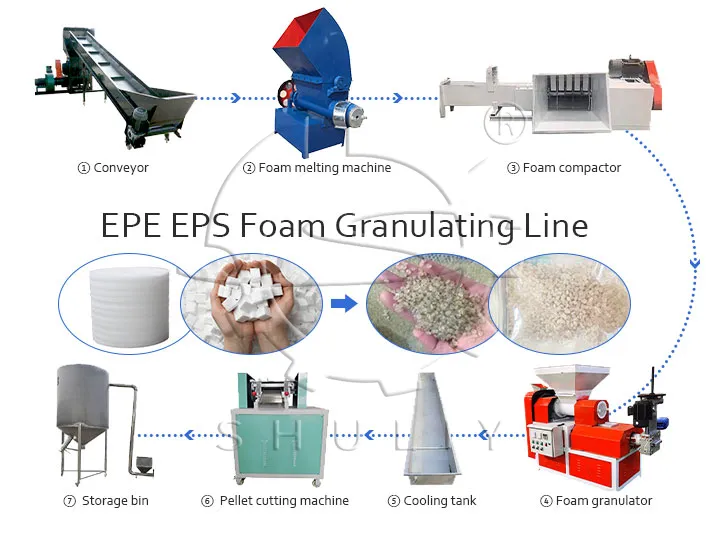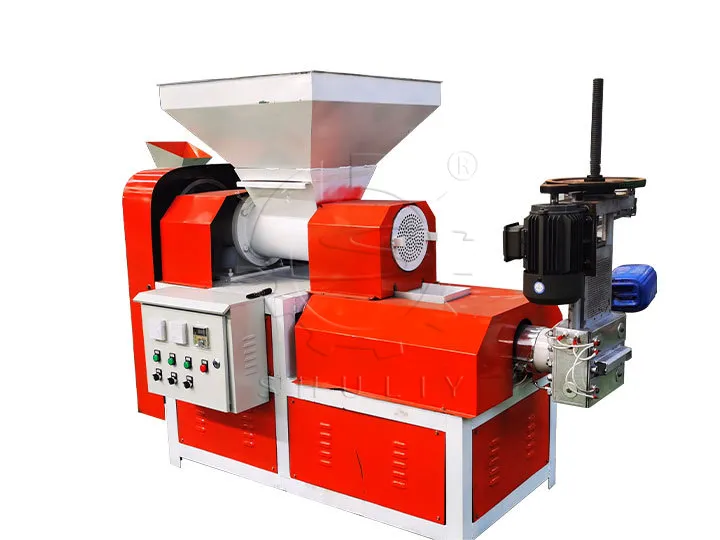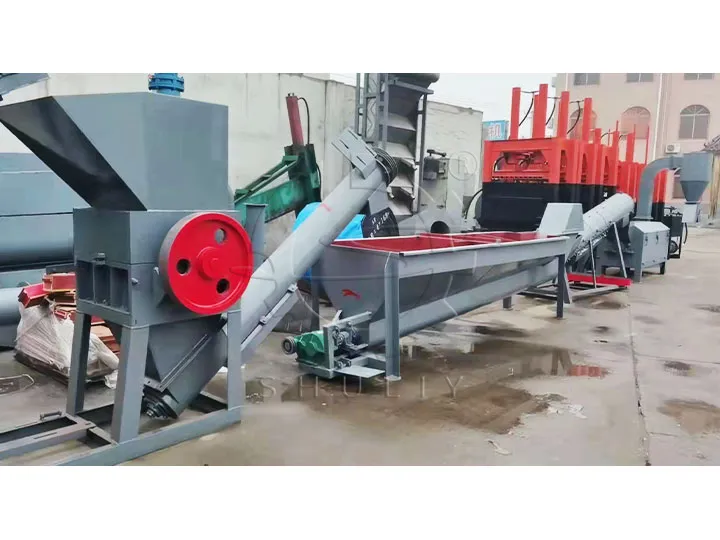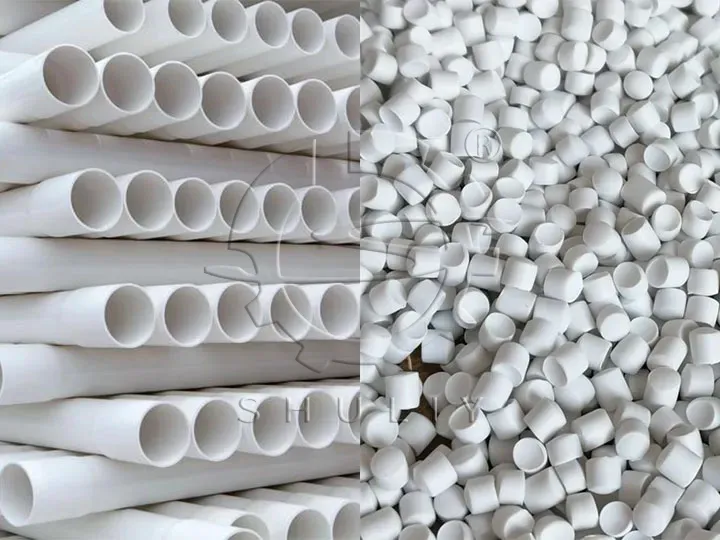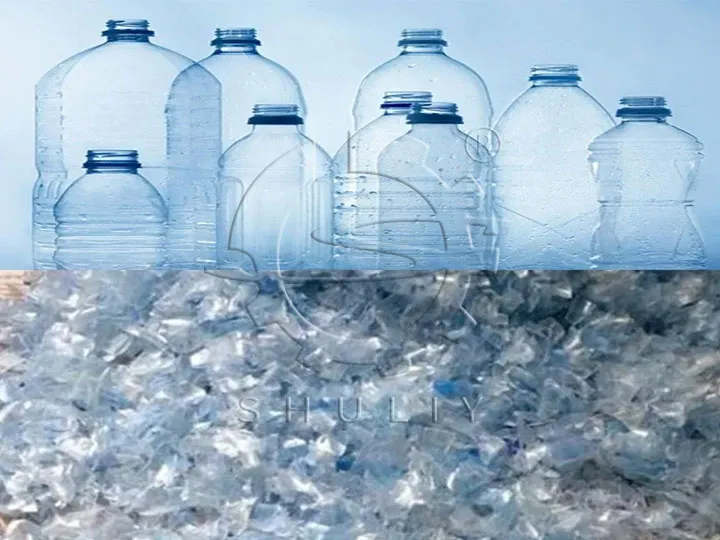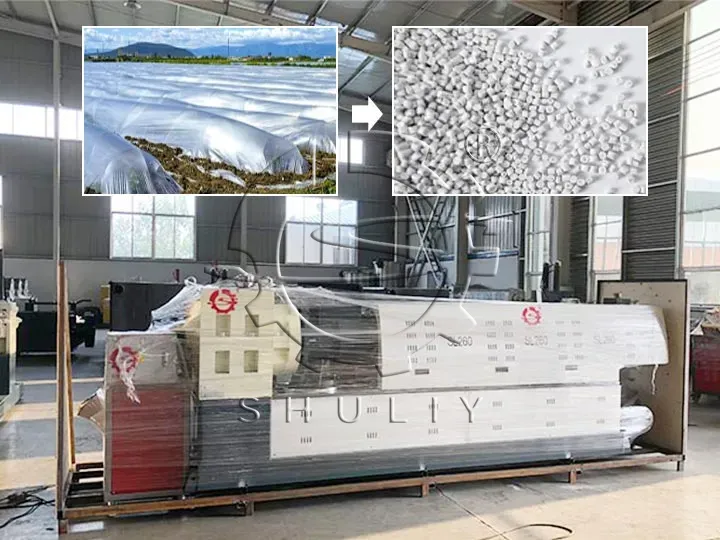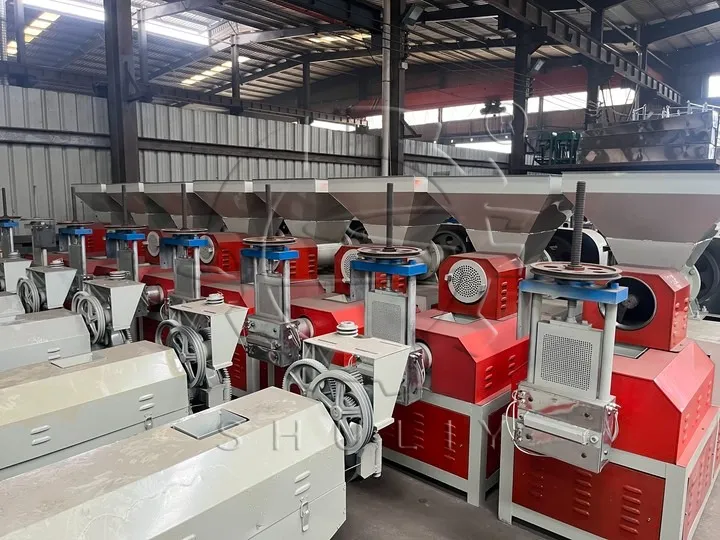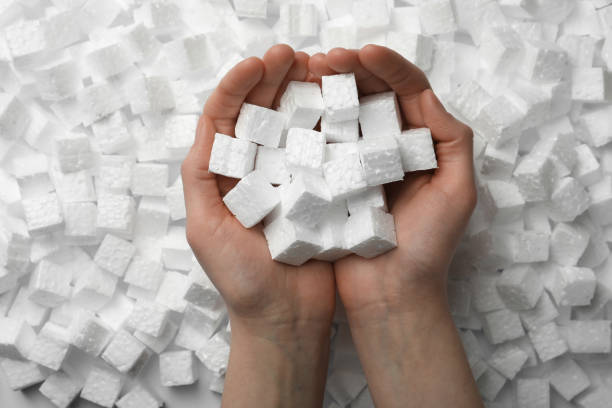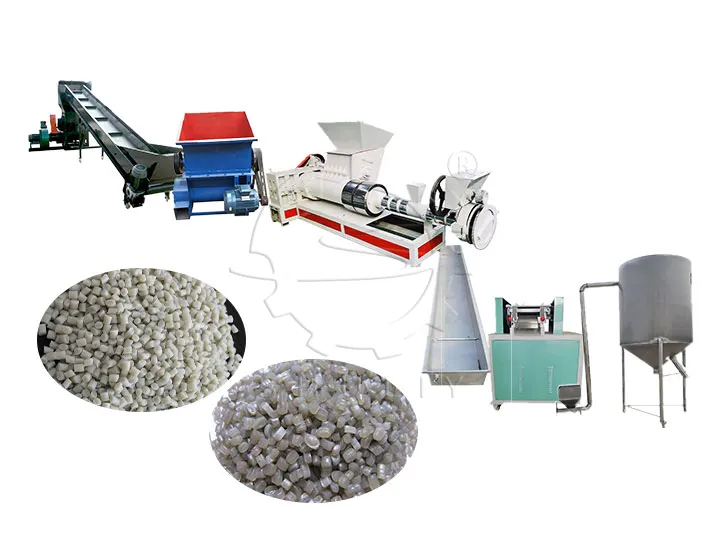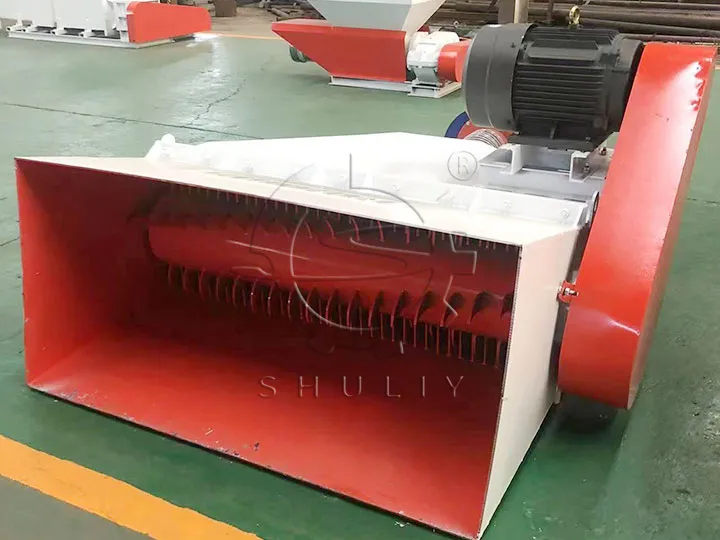прибыль на акцию
Полное название – Пенополистирол, и процесс его переработки умеренно сложен.
Характеристика:
Пенопласт EPS, как распространенный тип отходов, имеет легкий, хрупкий и занимающий много места материал, поэтому его часто используют в упаковке и строительных изоляционных плитах.
Проблемы:
Из-за своей хрупкости EPS во время переработки теряет множество мелких частиц, что затрудняет его очистку и разделение. Кроме того, специальной обработки требуют клеи и другие загрязнения, прилипшие к пенопласту EPS.
Соответствующее оборудование:
- Машина холодного сжатия: Это важнейший компонент при переработке пенопласта, позволяющий компактировать большие пенопласты в плотные слитки, а степень сжатия составляет 40:1, что облегчает транспортировку и хранение.
- Машина для горячей плавки: Машина для переработки пенополистирола методом горячего плавления измельчает и плавит пенополистирол и, наконец, превращает его в комки, чтобы облегчить последующую переработку.
- Машина для резки гранул EPS: Дробление пенопласта в однородные гранулы необходимого размера и формы, которые можно использовать в линии воспроизводства.
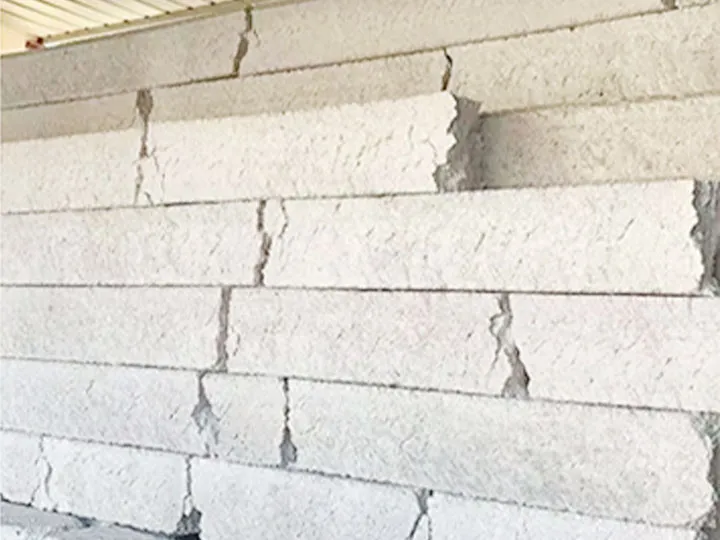
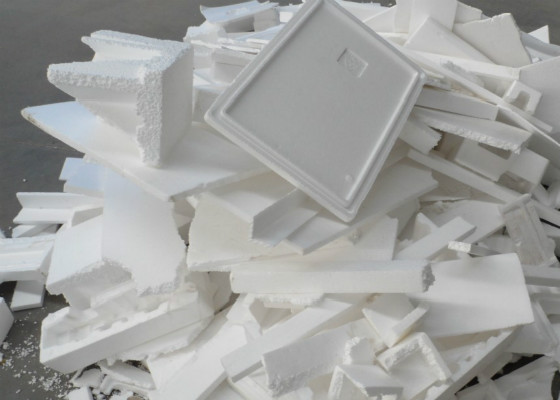
ЭПЕ
EPE означает вспененный полиэтилен с низкой и средней сложностью переработки.
Характеристика:
Как и EPS, он легкий. Однако ЭПЭ более гибок и имеет более высокую плотность, что позволяет легко придавать ему форму и широко используется в качестве защитного упаковочного материала, например, для электронных продуктов.
Проблемы:
Его легче перерабатывать, но следует проявлять осторожность, чтобы избежать запутывания материалов ЭПЭ в машине во время плавления и дробления, что может привести к неисправности машины.
Соответствующее оборудование:
- Дробилка пенопласта: Дробление крупных пенопластовых изделий на мелкие кусочки для последующей переработки.
- Уплотнитель пенопласта: Сжимайте кусочки пенопласта в плотные блоки, чтобы их можно было легко плавить и экструдировать.
- Машина для горячей плавки: Нагревает и плавит пластиковые гранулы до расплавленного состояния, а затем экструдирует их в форме длинных полос.
- Режущая машина: После охлаждения машина для резки пенопласта разрезает длинные полосы на гранулы для повторного использования.

XPS
XPS также известен как экструдированный полистирол, и его сложнее перерабатывать.
Характеристика:
Он обладает высокой прочностью, высокой плотностью и низким коэффициентом водопоглощения и часто используется в строительстве и других областях. Из-за структуры с закрытыми порами его трудно перерабатывать и переплавлять в процессе переработки.
Проблемы:
XPS имеет более высокое соотношение прочности и плотности, поэтому для его раздавливания и сжатия требуется более сильное механическое усилие. Кроме того, XPS может выделять вредные газы во время переработки, поэтому важно учитывать вопросы окружающей среды и безопасности в процессе переработки.
Соответствующее оборудование:
- Тяжелая дробилка: Специально разработан для работы с материалами высокой плотности и их измельчения.
- Машина для горячей плавки: Расплавьте и экструдируйте пенопласт XPS в плотные длинные полосы для следующего этапа процесса переработки.
- Оборудование для удаления пыли: Для обеспечения безопасности и защиты окружающей среды процесса переработки газа необходимо пылеулавливающее оборудование.
Заключение
При переработке различных видов пенопласта возникают разные проблемы. Понимание общих черт и различий в их переработке поможет повысить эффективность переработки. Выше приведены различия. Чтобы узнать больше об общих чертах и других знаниях о переработке, посетите наш веб-сайт о переработке пенопласта или нажмите на ссылку в правом нижнем углу для получения помощи от профессиональной команды онлайн.
